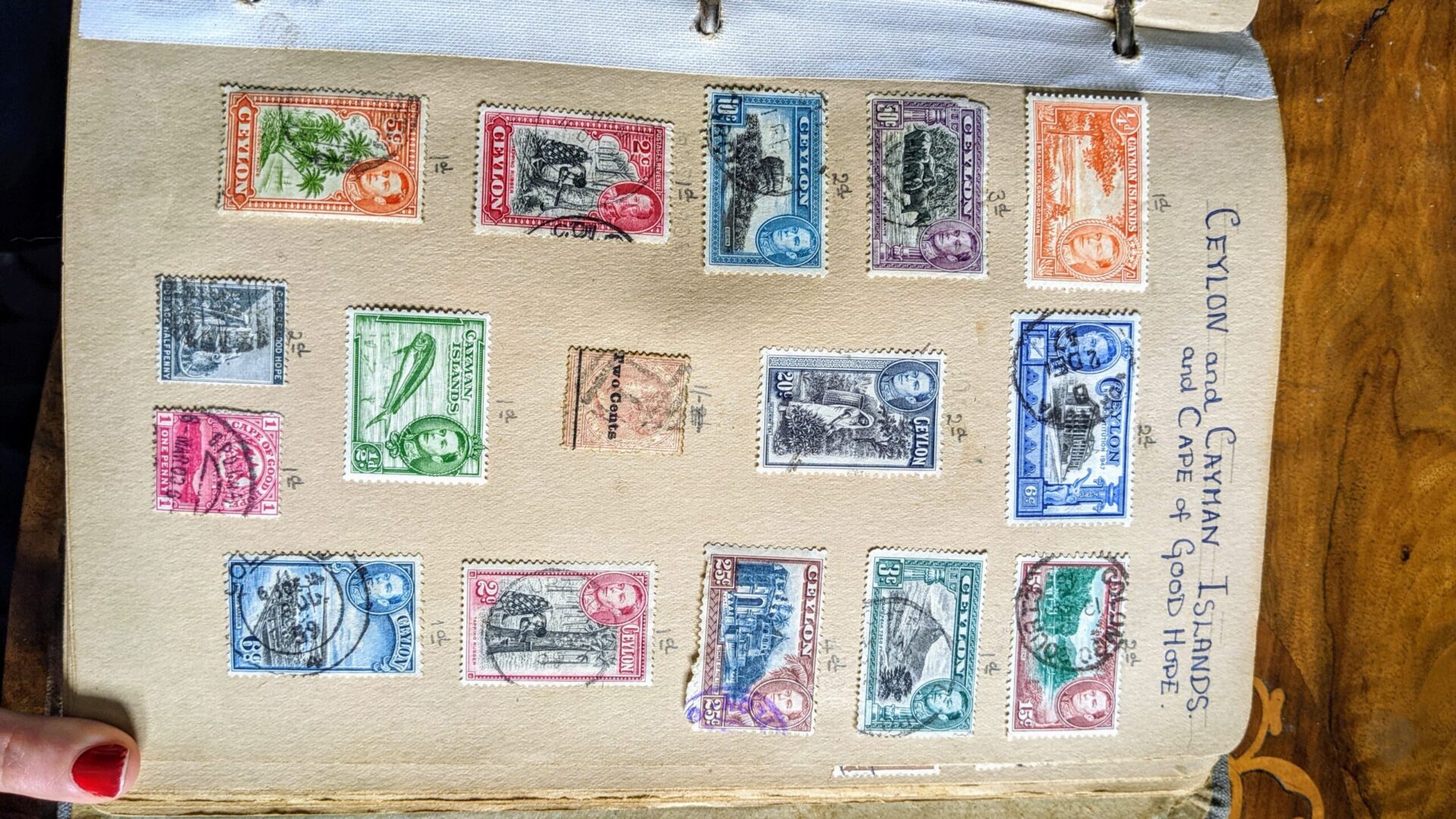When stamps are attached to an envelope, they are much easier to handle, and it makes more sense to sort them before soaking them, which will make them fragile. A unique form of glue holds postage stamps in place, and so we strongly recommend not tearing them from the paper.
Quick tip: Sorting your stamps beforehand will prevent you from wasting time on stamps you don’t want or need because soaking stamps can take hours depending on how many you have.
A stamp should never be pulled out of an envelope or its paper backing, since doing so will result in permanent damage. To prepare the paper for soaking, trim it with a pair of sharp scissors. Remember that some stamps are more valuable if they are kept on the envelope due to the historical context of the letter, for example if it was sent by a celebrity or royalty. Cancellation marks can also mean your letters are rare – so be sure to do your research before you decide to remove the stamp. If you are a beginner, the how to start stamp collecting blog maybe a good place for you to start.
How to remove stamps from envelopes
- Cut the stamps from the postcards or letters – do NOT tear!
- Soak the stamps in lukewarm water for a minimum of 30 minutes
- Take a test stamp to see if it comes away from the paper easily enough
- Dry and flatten your stamps
When cutting your stamps from an envelope or postcard, be sure to leave at least 2 cm surrounding the stamp so that you don’t accidentally cut into the stamp. You can rip the corner of the envelope if you are feeling confident, but this is a riskier option!
How long should I soak stamps?
As different types of adhesive are used, the time for your stamp to come away from the paper may vary. Once your stamps have been soaking for around 15 minutes, test to see whether they are starting to come away from the paper. Ordinarily, we’d recommend leaving them for at least 30 minutes, but keep a close eye on them to be sure.
It is crucial that your stamps be only soaked in lukewarm water, as using water that is too hot can potentially cause irreversible damage to them. You should fully submerge your stamps in the water, ensure that they are completed covered and face up.
Quick tip: Soaking stamps of a particular colour at the same time can avoid any major incidents if the ink should run. You should also use cooler water for particularly colourful stamps – this will take longer but will preserve them much better.
Can I soak self-adhesive stamps?
Removing self-adhesive stamps from letters and postcards has been a topic of wide discussion in the philatelic community. This article from classic.stamps.org contains suggestions from users with some great tips on the use of solvents rather than soaking stamps (and also the risks associated).
Using a solvent to remove self-adhesive stamps
A solvent called heptane aids in the removal of self-adhesives. A powerful solution is necessary to cut through the glue holding the self-adhesive stamp to the envelope. Nail polish remover will work, or lighter fuel. Many people discourage the use of any type of solvent as it could lead to damage to your stamps. Using these chemicals without the proper safety precautions can also lead to dangerous situations as you are using flammable gases.
Steaming self-adhesive stamps
If using flammable gases doesn’t seem appealing – you could try steaming your self-adhesive stamp rather than soaking.

33 year old casual stamp collector from the UK!
